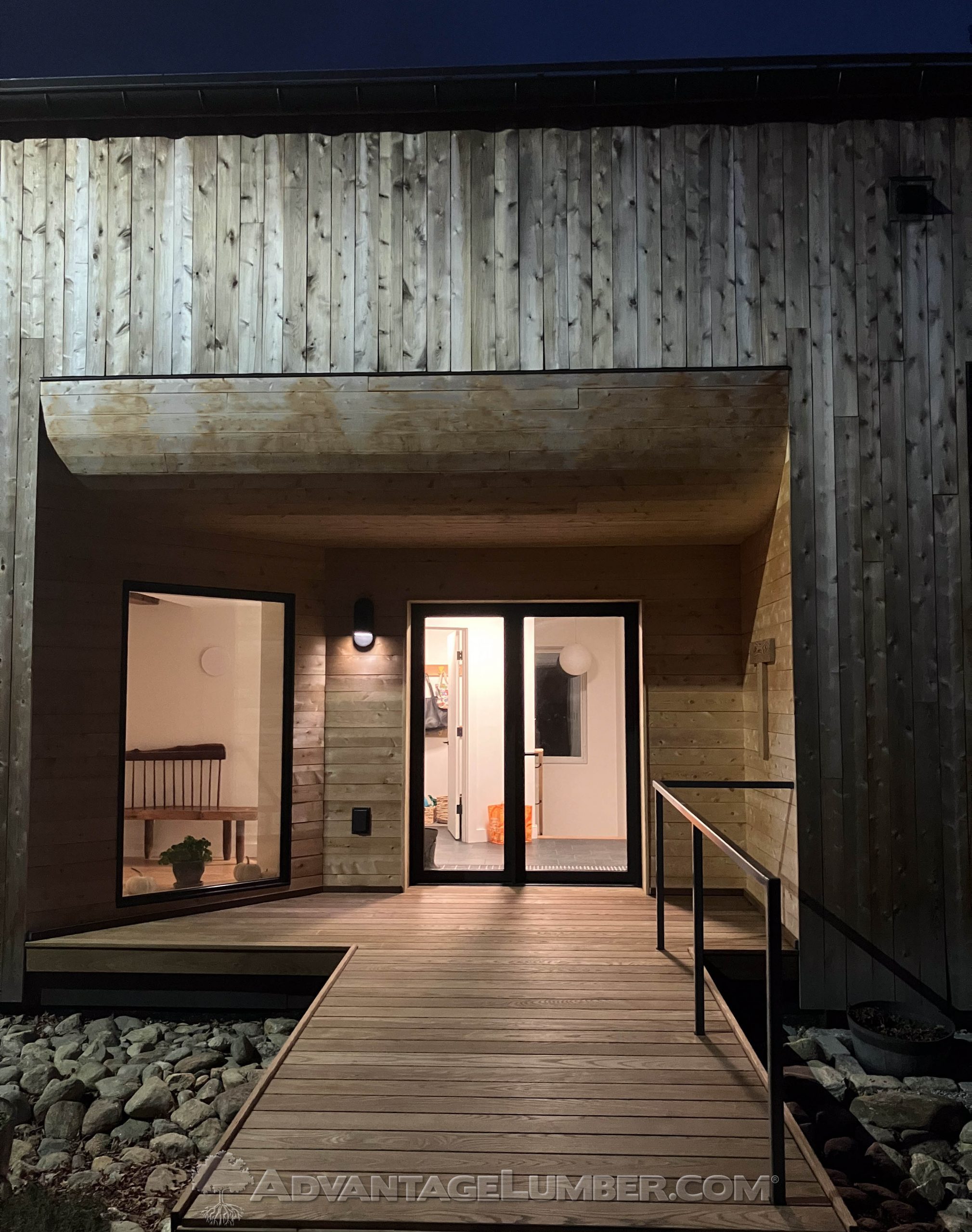Thermally Modified Ash is a revolutionary product in the world of wood building materials. Known for its durability, resistance to rot, and eco-friendly characteristics, it’s becoming a popular choice for both interior and exterior applications.
In this blog post, we’ll explore what Thermally Modified Ash is, how it’s made, its benefits, and common uses.
What is Thermally Modified Ash?
Thermally Modified Ash is natural hardwood that has undergone a specialized thermal modification process. This process enhances the wood’s physical properties, making it more durable, stable, and resistant to the elements. Ash, a hardwood known for its strength and beautiful grain, becomes an even more versatile material after thermal modification, suitable for various demanding applications.
How is Thermally Modified Ash Made?
The thermal modification process involves heating Ash wood in a controlled, oxygen-free environment at high temperatures, typically between 320°F and 450°F. The absence of oxygen prevents combustion while allowing the wood’s natural sugars and moisture to break down. This process fundamentally changes the wood’s cellular structure, resulting in:
- Reduced Moisture Content: The modification process removes most of the water, sugars and acids, reducing the wood’s susceptibility to warping and shrinking.
- Elimination of Food Sources for Rot: By breaking down sugars in the wood, thermal modification makes the material resistant to fungal decay and pests.
- Enhanced Dimensional Stability: The wood becomes less likely to swell or contract with changes in humidity.
Benefits of Thermally Modified Ash
Thermally modified wood offers a host of advantages that make it an excellent choice for various applications:
- Durability: The thermal modification process makes Ash resistant to rot, decay, and insect damage.
- Dimensional Stability: The modified wood resists swelling, shrinking, and warping, ensuring long-term performance in fluctuating climates.
- Eco-Friendly: Unlike pressure-treated wood, Thermally Modified Ash doesn’t rely on chemical treatments. It’s a natural and sustainable product.
- Aesthetics: The process darkens the wood, enhancing its natural grain patterns and giving it a rich, uniform appearance.
- Low Maintenance: Thanks to its resistance to environmental factors, it requires less frequent upkeep compared to untreated wood.
- Sustainability: Ash is a domestically sourced hardwood, and using thermally modified wood reduces the demand for less durable woods that would need to be replaced more frequently.
Common Uses for Thermally Modified Ash
Thermally modified woods are versatile and can be used in a wide range of applications, including:
- Decking: Its resistance to decay and ability to withstand outdoor conditions make it a superior choice for deck boards.
- Siding and Cladding: The durability and attractive appearance of Thermally Modified Ash make it an excellent material for building facades.
- Outdoor Furniture: With its ability to resist the effects of weather, it’s perfect for outdoor furniture that will last for years.
- Flooring: Its dimensional stability makes it suitable for indoor flooring in areas with fluctuating humidity.
- Saunas and Spas: The lack of chemical treatments and high resistance to heat and moisture make it ideal for use in saunas.
Conclusion
Thermally Modified Ash combines the beauty of natural wood with advanced performance characteristics, making it a sustainable and durable choice for both residential and commercial projects. Whether you’re building a deck, installing siding, or crafting custom furniture, Thermally Modified Ash offers a high-performance, eco-friendly alternative to chemically treated or exotic hardwoods.
If you’re considering Thermally Modified Ash for your next project, visit AdvantageLumber.com to explore our selection of premium, sustainably sourced products.
